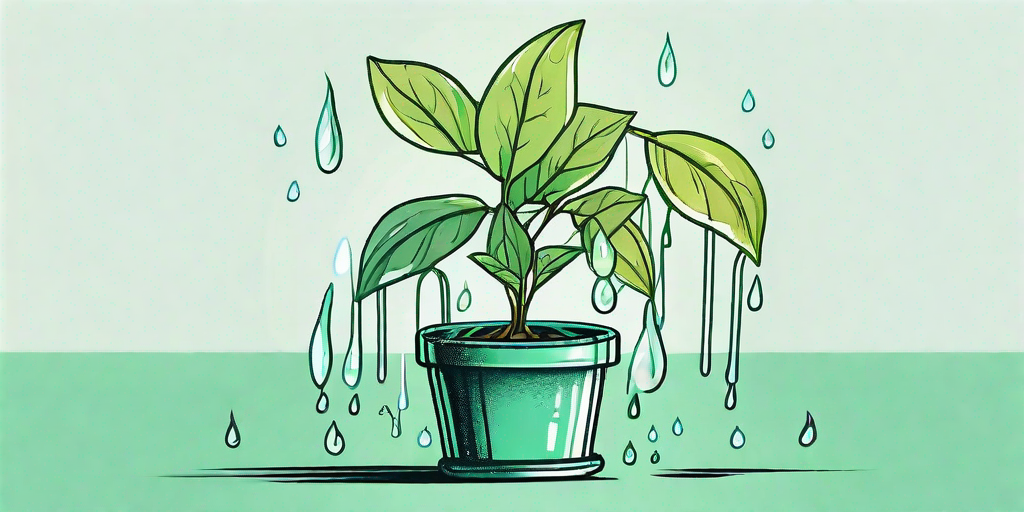
Is your jasmine plant looking a bit under the weather? Perhaps it's taken on a jaundiced hue that's more mellow yellow than vibrant green? Fear not, plant whisperers, we're here to help you diagnose and treat your leafy friend's ailment. With a little TLC and some handy tips, your jasmine plant will be back to its lush, green self in no time.
Understanding the Yellowing: It's Not Just a Fashion Statement
First things first, let's get to the root of the problem. Yellowing leaves, also known as chlorosis, is a common issue in plants, and it's often a sign that something's amiss. It's like your plant's way of sending out an SOS. But don't worry, it's not all doom and gloom. With a bit of detective work, you can figure out what's causing the yellowing and take steps to fix it.
There are several reasons why your jasmine plant might be turning yellow. It could be due to nutrient deficiencies, overwatering, underwatering, or even pests. It's like a plant version of Cluedo, but instead of Colonel Mustard in the library with the candlestick, it's aphids in the soil with the nitrogen deficiency.
Nutrient Deficiencies
Plants, like humans, need a balanced diet to stay healthy. If your jasmine plant is lacking in certain nutrients, it might start to turn yellow. The most common deficiencies are nitrogen, iron, and magnesium. So, if your plant is looking a bit pale, it might be time to up its intake of these essential nutrients.
But how do you know which nutrient your plant is lacking? Well, the location and pattern of the yellowing can give you some clues. If the older leaves are turning yellow, it's likely a nitrogen deficiency. If it's the younger leaves, it could be an iron deficiency. And if the yellowing is between the veins of the leaves, it's probably a magnesium deficiency. It's like a plant version of a treasure map, but instead of 'X' marking the spot, it's 'Y' for yellow.
Watering Woes
When it comes to watering your jasmine plant, it's a bit of a Goldilocks situation. Too much water, and the roots can become waterlogged and oxygen-starved, leading to yellow leaves. Too little water, and the plant can become dehydrated, also leading to yellow leaves. The trick is to find the 'just right' amount of water for your plant.
But how do you know if you're overwatering or underwatering? Well, if the leaves are yellow and wilted, it's likely overwatering. If they're yellow and crispy, it's probably underwatering. It's like your plant's way of telling you to turn the tap up or down.
Reviving Your Foliage: Green Thumbs to the Rescue
Now that we've diagnosed the problem, let's get to the solution. Whether it's a nutrient deficiency or a watering issue, there are steps you can take to help your jasmine plant recover.
And don't worry, you don't need to be a botanist or a wizard to revive your plant. With a bit of patience and the right care, your jasmine plant will be back to its green and glorious self in no time.
Addressing Nutrient Deficiencies
If your jasmine plant is lacking in certain nutrients, the solution is simple: feed it. You can do this by adding a plant fertilizer to the soil. But remember, not all fertilizers are created equal. You'll want to choose one that's specifically designed for jasmine plants, as these will have the right balance of nutrients.
And don't go overboard with the fertilizer. Too much can be just as harmful as too little. It's like feeding a toddler - you wouldn't give them a whole chocolate cake, would you? Well, maybe you would, but your plant certainly won't thank you for it.
Sorting Out Watering Issues
If you're overwatering your jasmine plant, the solution is simple: water less. If you're underwatering, water more. But remember, it's not just about the quantity of water, but also the frequency. Jasmine plants prefer a deep watering every few days rather than a shallow watering every day.
And don't forget to check the drainage. If the water isn't draining properly, it can lead to waterlogged roots and yellow leaves. So make sure your plant pot has adequate drainage holes, and consider using a well-draining soil mix.
Frequently Asked Questions
Still got questions? Don't worry, we've got answers. Here are some of the most frequently asked questions about jasmine plants and yellow leaves.
Why are the leaves on my jasmine plant turning yellow?
There could be several reasons why your jasmine plant's leaves are turning yellow. It could be due to nutrient deficiencies, overwatering, underwatering, or pests. The key is to diagnose the problem and take steps to fix it.
How can I prevent my jasmine plant's leaves from turning yellow?
The best way to prevent yellow leaves is to provide your jasmine plant with the right care. This includes using a balanced fertilizer, watering correctly, and checking for pests regularly.
What should I do if my jasmine plant's leaves are already yellow?
If your jasmine plant's leaves are already yellow, don't panic. The first step is to diagnose the problem. Once you've figured out what's causing the yellowing, you can take steps to fix it. This might involve adjusting your watering schedule, adding a balanced fertilizer, or treating for pests.
Conclusion
So there you have it, folks. If your jasmine plant is feeling yellow, it's not the end of the world. With a bit of detective work and the right care, you can bring your leafy friend back to health. So roll up your sleeves, put on your gardening gloves, and get ready to play plant doctor. Your jasmine plant will thank you for it.















